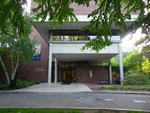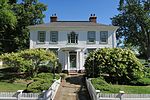Mount Holyoke College Botanic Garden

The Mount Holyoke College Botanic Garden, in South Hadley, Massachusetts, United States, encompasses the Mount Holyoke College campus, an arboretum, numerous gardens, and the Talcott Greenhouse. It was first designated a botanical garden in 1878, with guidance from Lydia Shattuck, professor of botany. The construction of the Talcott Greenhouse complex, which houses the Botanic Garden's collection of non-hardy plants, began in 1896, after the original greenhouse was destroyed by fire, and was completed in 1899.The Botanic Garden serves as an outdoor teaching laboratory as well as a place to arrange and display plants on campus. The Talcott Greenhouse maintains a permanent collection in addition to space for research and teaching purposes.
Excerpt from the Wikipedia article Mount Holyoke College Botanic Garden (License: CC BY-SA 3.0, Authors, Images).Mount Holyoke College Botanic Garden
Greenwood Lane,
Geographical coordinates (GPS) Address Nearby Places Show on map
Geographical coordinates (GPS)
| Latitude | Longitude |
|---|---|
| N 42.2574 ° | E -72.5724 ° |
Address
Mount Holyoke College
Greenwood Lane
01075
Massachusetts, United States
Open on Google Maps






